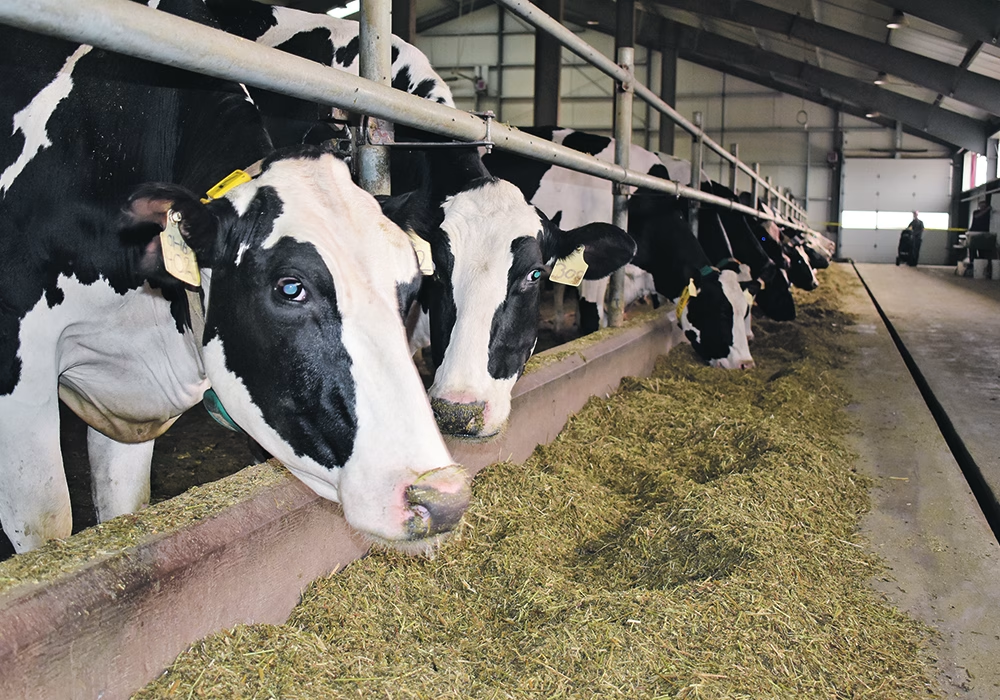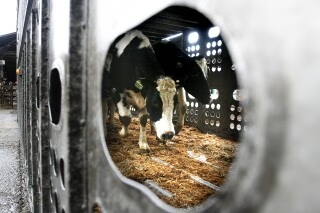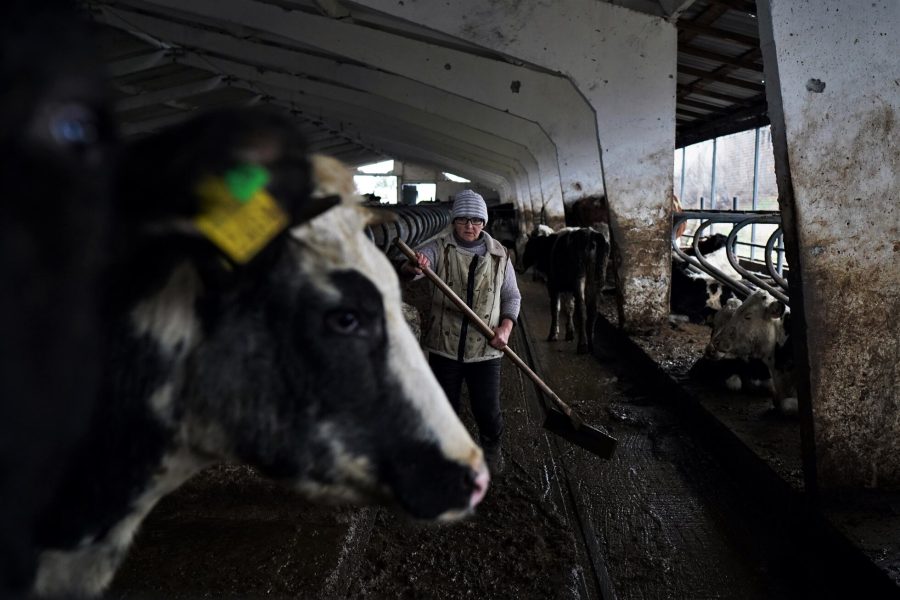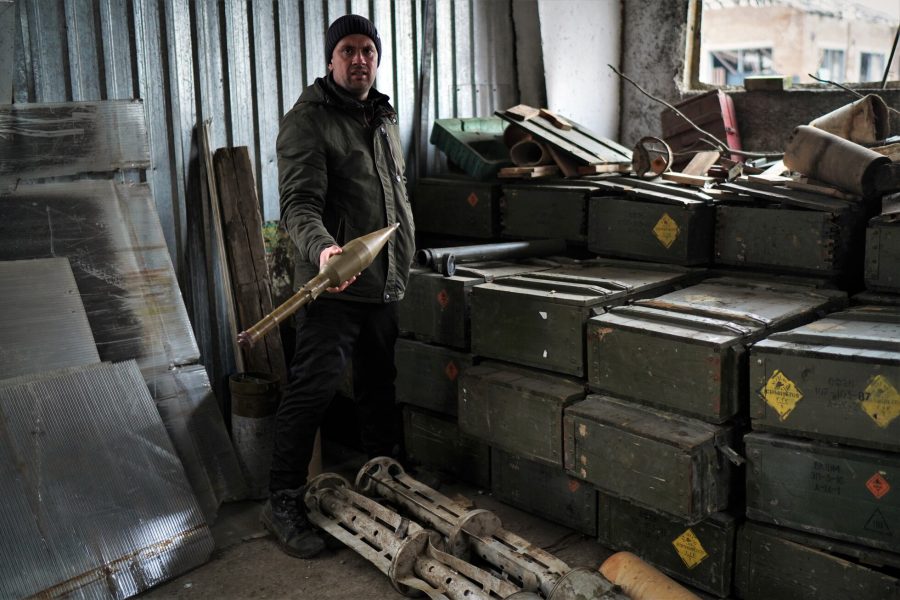Stay informed on protecting Michigan dairy herds from the HPAI outbreak. Are your biosecurity measures current? Find out now.
Summary:
The recent detection of highly pathogenic avian influenza (HPAI) in a dairy herd in Shiawassee County, Michigan, has raised the state’s total to 29 affected herds, highlighting the ongoing threat to dairy farms nationwide. MDARD Director Tim Boring emphasized that “biosecurity remains our most effective defense against HPAI,” urging rigorous implementation of enhanced measures to safeguard livestock. As of September 3, outbreaks have impacted 197 dairy herds across 14 states, with symptoms including decreased milk supply, respiratory issues, and fever. The virus spreads quickly through contaminated environments, making stringent biosecurity protocols essential to protecting herds and maintaining dairy operations.
Key Takeaways:
- The HPAI outbreak in Michigan has affected 29 dairy herds as of September 3.
- Biosecurity measures are crucial to preventing the spread of HPAI among dairy farms.
- The MDARD has implemented a temporary ban on exhibiting lactating and near-term pregnant cattle.
- 197 dairy herds across 14 states have confirmed HPAI outbreaks, underscoring the widespread nature of this issue.
- Collaboration between MDARD, veterinarians, and federal partners is essential for monitoring and mitigating the outbreak.
- Key biosecurity practices include isolating new animals, daily health monitoring, and limiting non-essential farm visitors.
- Enhanced biosecurity measures have been mandated in Michigan to control the outbreak.

The recent discovery of highly pathogenic avian influenza (HPAI) in a dairy herd in Shiawassee County, Michigan, has sent shockwaves across the agricultural industry. According to Michigan Department of Agriculture and Rural Development (MDARD) Director Tim Boring, the epidemic has attracted 29 afflicted herds to the state. This is not simply a statistic for dairy producers; it is a severe situation that requires immediate attention and action. The livelihoods of individuals directly engaged in dairy production are at stake, and the broader issues about biosecurity and cattle health are of significant concern. Dairy producers are now on high alert, taking every precaution to preserve their cows and avoid new outbreaks.
Michigan’s HPAI Outbreak: A Growing Threat to Dairy Farmers
Michigan’s highly pathogenic avian influenza (HPAI) epidemic has already affected 29 herds in the state, causing substantial alarm among local dairy farmers and industry experts. The newest case, discovered in Shiawassee County, demonstrates the virus’s ongoing danger. This case was identified first by the Michigan State University Veterinary Diagnostic Laboratory and is awaiting additional verification by the USDA’s National Veterinary Services Laboratories.
Nationwide HPAI Outbreak: A Call to Action for Dairy Farmers
As we zoom out and consider the national landscape of HPAI outbreaks, the situation reveals a widespread and concerning pattern. Across the United States, 197 dairy herds have confirmed HPAI A (H5N1) cases as of September 9th, 2024. The state-by-state breakdown highlights the extent of the challenge:
- Colorado: 64 herds
- Idaho: 30 herds
- Michigan: 29 herds
- Texas: 24 herds
- Iowa: 13 herds
- Minnesota: 9 herds
- New Mexico: 9 herds
- South Dakota: 7 herds
- Kansas: 4 herds
- California: 3 herds
- Oklahoma: 2 herds
- North Carolina: 1 herd
- Ohio: 1 herd
- Wyoming: 1 herd
These numbers highlight the outbreak’s widespread character, which impacts numerous states and demands a strong response. Biosecurity measures remain the frontline defense, but the magnitude of the problem necessitates monitoring and aggressive management. Dairy producers around the country must step up their efforts to preserve their herds as the effects of these outbreaks spread across the dairy sector. The facts reveal that no state is immune, highlighting this as a vital national problem.
Understanding Highly Pathogenic Avian Influenza (HPAI)
What is HPAI, and why is its presence in dairy cows a concern? Highly pathogenic avian influenza (HPAI) is a severe bird virus primarily affecting poultry. However, recent incidents reveal that it isn’t simply a concern for poultry producers; dairy cows are also in danger.
- Symptoms to Watch For
HPAI may cause a variety of problematic symptoms in dairy cattle. Look for unexpected decreases in milk supply, respiratory problems, fever, and lethargy. Infected cows may also have nasal discharge and a diminished appetite. These symptoms may be detrimental to herd health and production. - Transmission: How Does it Spread?
HPAI spreads quickly by direct contact with diseased birds or polluted settings. The virus may spread via infected tools, equipment, and agricultural workers’ clothes. This ease of transmission complicates control, particularly in locations with large, dense animal populations. - Impact on Milk Production and Herd Health
An epidemic of HPAI in a dairy herd may halt milk production and result in considerable economic losses. Infected cows give less milk, thereby impacting the herd’s health. Farmers must then cope with rising veterinary expenditures and the risk of animal loss. Rapid, effective action is required to reduce these effects.
Understanding HPAI’s symptoms, transmission mechanisms, and possible consequences emphasizes the significance of stringent biosecurity measures. Implementing and adhering to these measures is about protecting individual herds and safeguarding the entire agricultural community. Every dairy producer must take this responsibility seriously to prevent the spread of this virus.
Why Biosecurity is Your Dairy’s Best Defense Against HPAI
In the ever-changing war against Highly Pathogenic Avian Influenza (HPAI), one concept comes up repeatedly: biosecurity. Why is it important? Good biosecurity controls may distinguish between a limited epidemic and a widespread calamity. When HPAI occurs, we must prioritize biosecurity as our first line of defense. It is about erecting substantial barriers to shield healthy herds from possible infections.
The Michigan Department of Agriculture and Rural Development (MDARD) recognizes the urgency. Their Determination of Extraordinary Emergency HPAI Risk Reduction and Response Order (HRRRO) establishes rigorous measures to contain the spread. These restrictions include a temporary prohibition on lactating and near-term pregnant cow shows. This procedure guarantees that potentially susceptible animals are not exposed to conditions where the virus may rapidly propagate. Furthermore, the HERO expressly bans showing animals from diseased herds until the danger has been adequately reduced.
Enhanced biosecurity also includes several crucial activities, such as isolating new animals, regularly assessing their health, and restricting farm visitation to those strictly required for operations. If carefully followed, these simple but effective actions may dramatically lower the risk of HPAI transmission and help protect the health of dairy farms throughout the state.
MDARD’s Multi-Faceted Approach to Combatting HPAI: Your RoleMDARD’s responsibility in responding to the HPAI epidemic goes beyond providing instructions and rules. They’re working with veterinarians and other state and federal partners to address this critical problem. This alliance seeks to protect the health of vulnerable herds via intensive monitoring and preventative actions.
MDARD ensures that dairy producers obtain current information and advice by keeping open contact lines with state and federal partners. Their integrated efforts include providing crucial resources to dairy producers, such as personal protective equipment (PPE) and guidelines for effective biosecurity measures. This reduces the danger of disease transmission, protecting both animal and human health. PPE is required to maintain robust biosecurity procedures such as isolating new animals, doing daily health checks, and limiting access to farm visitors.
MDARD ensures that dairy producers obtain current information and advice by keeping open contact lines with state and federal partners. Their integrated efforts include real-time herd health monitoring, allowing swift reactions to new HPAI cases. Early diagnosis and response are crucial in preventing extensive epidemics, making constant monitoring a critical component of the strategy to combat HPAI.
It is a comprehensive strategy that combines resources, experience, and proactive measures to safeguard Michigan’s dairy industries. By collaborating, these organizations want to strengthen the dairy industry’s resistance to HPAI and other possible dangers.
Critical Biosecurity Practices: Your Dairy’s Best Defense Against HPAI Threats
Adopting important biosecurity policies is not simply a suggestion—it’s a need to protect your dairy farm against the deadly effects of HPAI. Are you confident in your biosecurity measures?
- Isolate New Animals
New animals may be HPAI carriers without exhibiting symptoms. Isolate them for at least 30 days and watch for any sickness symptoms. Consider it a quarantine zone—a barrier that may safeguard your whole herd. - Daily Health Monitoring
Make regular health checkups an essential component of your routine. Early diagnosis of HPAI signs may be the difference between a controlled epidemic and a catastrophic spread. Look for respiratory discomfort, diarrhea, or rapid decreases in milk supply. - Limit Non-Essential Visitors
Foot traffic creates danger. Allow only needed individuals to visit the property. Keep track of everyone who comes and leaves your property. Establish a designated location for visitors to change into clean clothes and footwear before approaching animal areas.
Your commitment to these critical procedures is your best defense. Do not wait for the worst-case situation; instead, be proactive. Implement them now to keep your dairy business secure.
The Bottom Line
The road ahead for Michigan’s dairy producers is complex, with the HPAI epidemic adding another layer of complexity to an already demanding sector. As we have seen, the increase in infected herds is concerning, and the need for strict biosecurity measures cannot be stressed. Collaborative efforts by the MDARD, veterinarians, and government organizations are critical in treating and controlling the spread of this virus. Implementing and adhering to strict biosecurity standards remains the most effective prevention against HPAI.
Looking forward, it is critical to consider the long-term implications of this epidemic on individual dairy enterprises and the more significant dairy sector in Michigan and elsewhere. Are your farm’s biosecurity measures strong enough to survive potential dangers in the future? Now is the moment to review and strengthen your defenses. The decisions you make now may have an impact on the future of your dairy enterprise.
Learn more:
- Michigan Declares Emergency Order for High Path Avian Influenza Risk Reduction
- 3 More Michigan Dairy Herds Hit with High Path Avian Influenza
- HPAI Outbreak Hits Dairy Cattle in Iowa, Minnesota, and Wyoming: What Dairy Farmers Need to Know
 Join the Revolution!
Join the Revolution!
Bullvine Daily is your essential e-zine for staying ahead in the dairy industry. With over 30,000 subscribers, we bring you the week’s top news, helping you manage tasks efficiently. Stay informed about milk production, tech adoption, and more, so you can concentrate on your dairy operations.







 Join the Revolution!
Join the Revolution!













